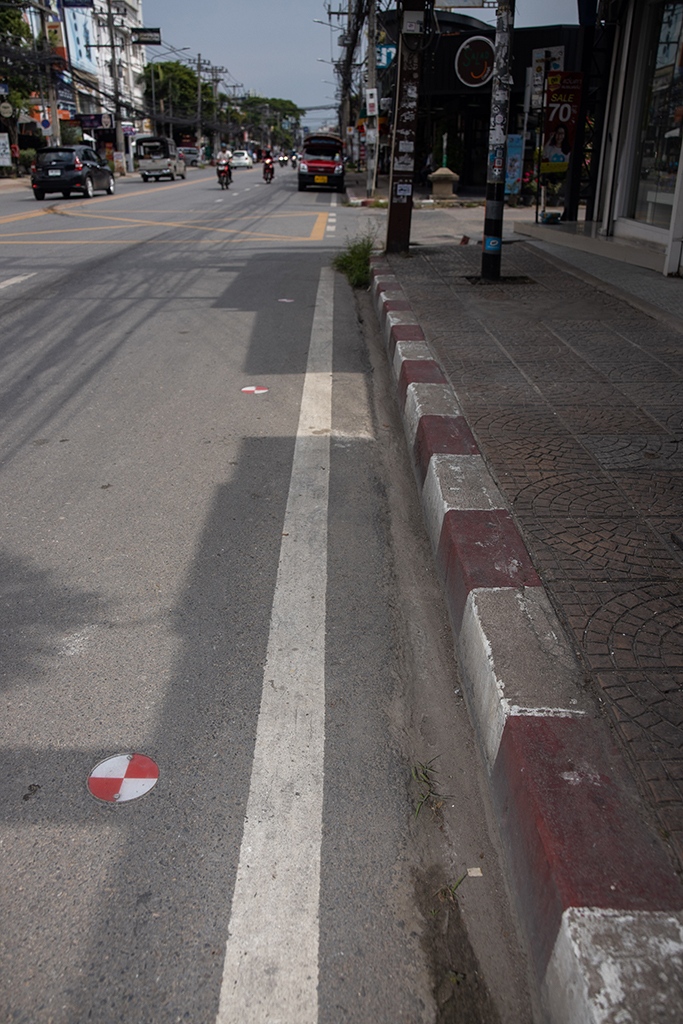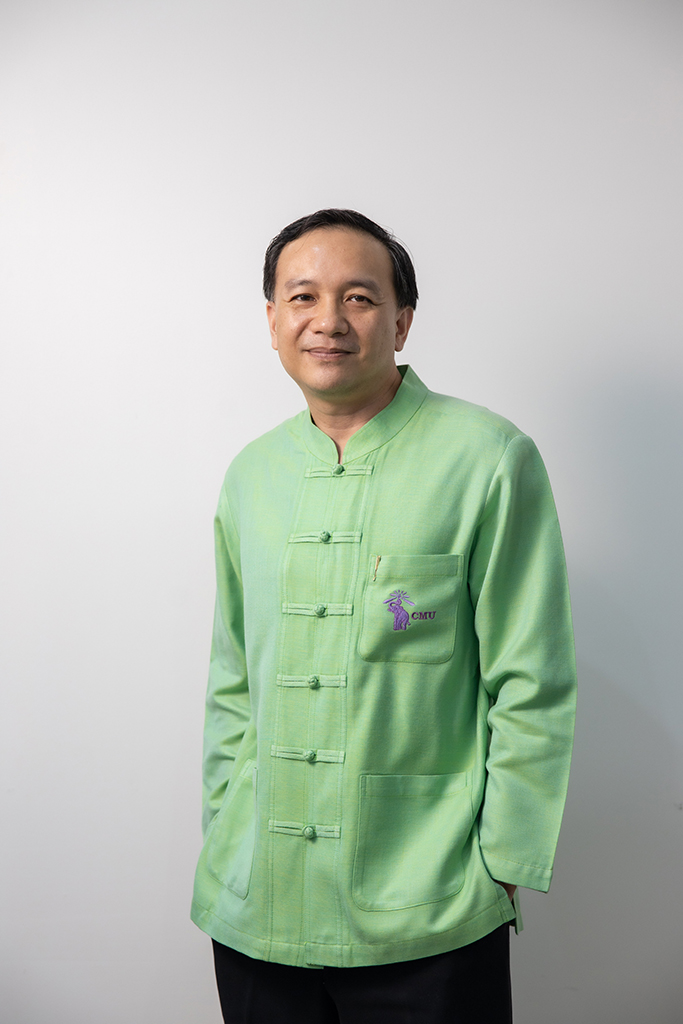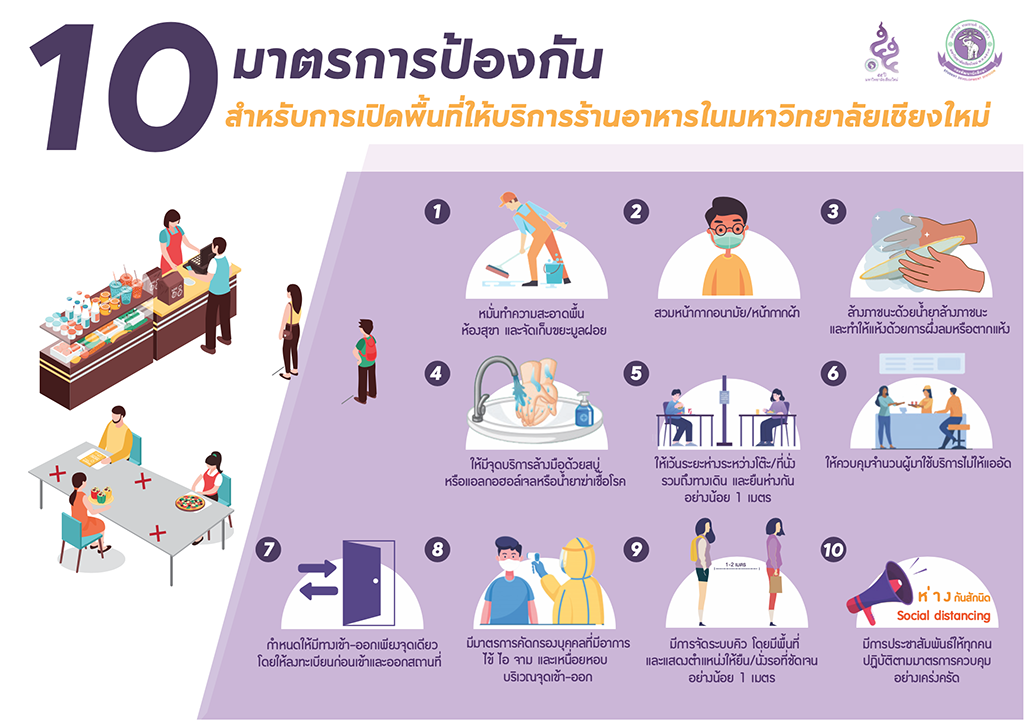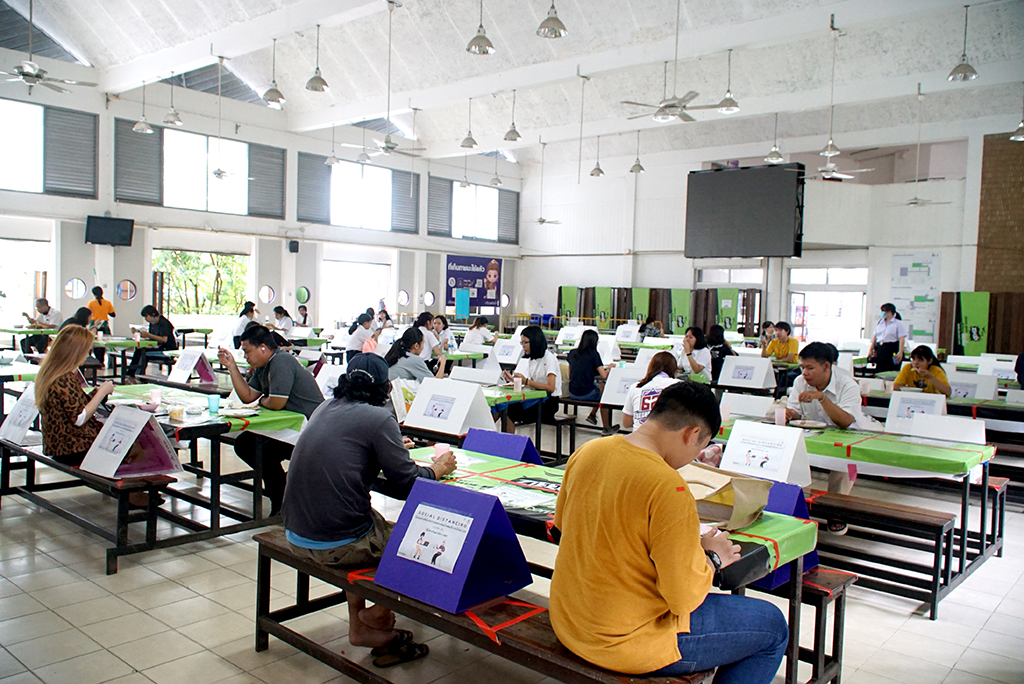CMU Smart Campus
Chiang Mai University’s campus is famous for being one of the most charming campuses in Thailand. With its location on the foothills of Doi Suthep, its lush green grounds, its shady parks and pathways and its general user-friendly atmosphere, on any given day students may see the president or a vice president of the university walking around campus or inspecting the grounds, a normal friendly interaction between faculty and students which marks this unique campus.
Today CMU’s campus is making an even bigger name for itself for being the north of Thailand’s first Smart Campus, having implemented numerous technological and sustainable initiatives for the betterment of campus life.
Forty thousand people live on Chiang Mai University’s campuses which cover 2,000 rai of land. After implementing the CMU Smart City – Clean Energy, the project was selected as one in seven showcases by the Entity Conservation and Promotion Fund Office (ECPFO).
The thinking behind the Smart City concept is to harness the latest technology to facilitate better quality and higher sustainability of life for all residents. To that end, 2017-2021 has been slated, by the university, as the time period to implement many new changes concerning the university’s interaction with the environment and its consumption of energy.
Associate Professor Prasert Rerkkriangkrai, Vice President Chiang Mai University
Vice President of Chiang Mai University Associate Professor Prasert Rerkkriangkrai has been tasked with overseeing the environmental and energy strategy for the university, covering all innovative strategies for buildings, public facilities and the overall design of the Smart Campus.
“The CMU Smart Campus strategy was implemented following our understanding of our community’s many challenges. We then used technology and innovation to address those issues. It is not just about harvesting the usage of technology and innovation, but it is also about public participation,” explained Associate Professor Prasert. “The aim is for this to be a livable campus, a place which makes people happy and a place which is sustainable. Each place has its own set of problems with solutions which have to be adjusted accordingly.”
“To save energy we simply have to cut down to three work days,” continued Associate Professor Prasert. “That is saving. But the problem with that is that our output will also reduce. If you are ill you go to the doctor who offers a diagnosis. We too have had to do that. We do an energy audit, like a doctor thoroughly checking every part of a patient’s body of ailments, we have done that to our buildings, our facilities, our spaces. Once we have the data, then we can manage it. Next we find other sources of energy such as solar energy or turning waste into energy. When you look up around canvas you will notice solar panels everywhere. Today Chiang Mai University’s campus has more solar cells than anywhere else in Thailand. We generate up to 40% of our energy from the sun. This is used for such things as hot water for our dorms and has helped reduce our electricity costs by 30%. Everything is managed by our Smart Grid system which allows for trade in energy. For ten years we talked about doing this, and I am pleased to say that today we have implemented it. If we have a surplus of energy on one building, we can now send it to the hospital to be used there. We have complete control of our energy map and can move it around whenever needed.”

Solar cell panels on roof connecting Maharaj Hospital buildings
Solar cell panels on roof of Energy Research and Development Institute of Nakornping
Smart Environment
One point of great pride for the university is its bio-mass plant run by the Energy Research and Development Institute –Nakornping (ERDI-CMU) which is successfully turning the university’s waste into not just biodegradable waste, but also into energy. With a zero waste policy, the university is now processing 15 tonnes of waste per day in its plant, using multiple techniques to turn various waste into products and energy. The university’s Water Management system is also turning most of the waste water into the university into fresh usable water. Not only that, the bio-mass plant is being used as a teaching tool for students and faculty and will be for generations to come.
Electronic garbage disposal point
Bio mass plant for a sustainable future
Purple transport using compressed bio-methane gas (CBG) from the bio-mass plant
Smart Mobility
The central command for such initiatives is also smart. The Smart Campus Management Center controls all the data to streamline, and make most effective, the university’s many initiatives. A large screen features a bewildering number of real time safety, energy and environmental data -- traffic flow, numbers of passengers on the free electric campus transport, CCTV cameras, PM2.5 levels, Wi-Fi hotspots, levels of garbage, usage of water, energy consumption, routes of patrol, etc. This information is then gathered and analysed, allowing for adjustments and fine tuning.
Up to date information on campus energy usage
“We have five gates into our main campus,” explained Associate Professor Prasert. “Tens of thousands of vehicles come through daily. In the past we have experimented with closing off campus to those without permits, but this is not realistic. Sure, we are concerned about the many people who use our campus as a transit, entering one gate and exiting another within minutes. But we have all of their data, so that mitigates some of the safety concerns. Recently we had someone handing out flyers accusing the university of using some radio waves which make people go mad, blaming a recent shooter in Nakhon Ratchasima on us. It didn’t take us long to track down this person using our technology.”
It is not just about safety, however, but also convenience, the technology coming in very useful when managing traffic flow.
Assistant Professor Ekkachai Mahaek, Ph.D, Vice President Chiang Mai University
Assistant Professor Ekkachai Mahaek, Ph.D, who is in charge of creative Lanna strategy and architecture talks about the challenges of modernising a university which used to have very separate management amongst various faculties, each with their own parks, roads and systems.
“Chiang Mai University’s roadways are filled with dead ends and complex little lanes,” said Assistant Professor Ekkachai Mahaek, Ph.D. “The zoning of the academic residential areas was set apart and hard to reach from the various faculties, so we had to really look at this and find a Smart Road System for Smart Growth. We studied the zoning, the land usage, the infrastructure, not just of transportation, but of electricity, water mains and all facilities which were the backbones of the campus. I had to take it apart and dismantle the old in order to build up the new. Firstly, we had to create zoning, so food halls and libraries – areas which are used by all - became centralised. Roads which didn’t connect to these areas were extended so that they did connect into a looping system. With more free public transportation, private vehicle usage reduced and we added footpaths and bicycle lanes, encouraging more people to walk and cycle.”

Smart Sensor warning of no parking areas on Nimmanhaemin
Chiang Mai University’s success story has led to the newest project in Chiang Mai – Smart Nimman. The university, along with various organisations, are overseeing the implementation of a Smart Nimman which will see a Smart Mobility system to streamline parking and traffic along the congested road and its lanes; the Smart Sensor will manage parking; Park and Ride will set up car parks with shared rides to nearby destinations; Shared Parking will also have an Online Booking system and Online Payment for convenience.
Smart Community
The Chiang Mai University Campus is blanketed with Wi-Fi, offering its students and faculty mobility and convenience. The popular Ang Kaew Reservoir has now been connected by a walkway to the Tad Chompoo Reservoir as well as many parks and green areas, extending the leisure and exercise routes for many. A 24 hour co-working space – Smart Classroom – allow students a safe space to learn and study at all hours, with multimedia and computer support.

Associate Professor Charin Techapun, Ph.D, Vice President Chiang Mai University
Food is also essential and to that end, there are now 300 food outlets across campus – in dormitories, classrooms – all of which have undergone inspection by the CMU Food Safety guidelines. Prices are low and quality high, SDGs 3 Good Health and Well –Being director, Assistant Professor Charin Techapun, Ph.D. said, “For a while we were so focused on imparting our knowledge to others outside of our own gates that we neglected our own health and wellbeing. Our students have long eaten the food from various vendors across the campus. But we never really vetted them to find out who was producing the food or where it came from. Today we have set standards for vendors to follow. There is to be no use of pesticides or chemicals in any food produce; farmers having to undergo checks and tests to ensure their food safety. We also have more and more farms we work directly with, advising them as to how to produce clean and quality vegetables, fruits or meats. Vendors all must buy the produce from these farms. It has been a five year process but I can say without doubt now that all food on campus is chemical free. We started by asking volunteers to help vendors and asking vendors to try. But now it is a rule and they have to comply. Sure, this has a high cost, but it will all be worthwhile in the long run. Many of the farmers and producers working with us have also received certificates from us guaranteeing their quality. This has helped them expand their markets to the general consumer. The consumer is also learning to appreciate quality. We have a team to do spot-checks at all times. Now that we have ensured the quality of organic produce on campus, we intend to expand our works off-campus, as areas in front of and behind the university, as well as Nimmanhaemin, are frequented by our students. We want to make sure they are eating well and healthily off-campus too.”


The university has recently launched an application which will allow students to check their consumption of calories, protein or fat, as they dine across campus, as all food outlets have now come under the massive database of the university.
The university is not just researching and developing new knowledge and ways, it is living it.